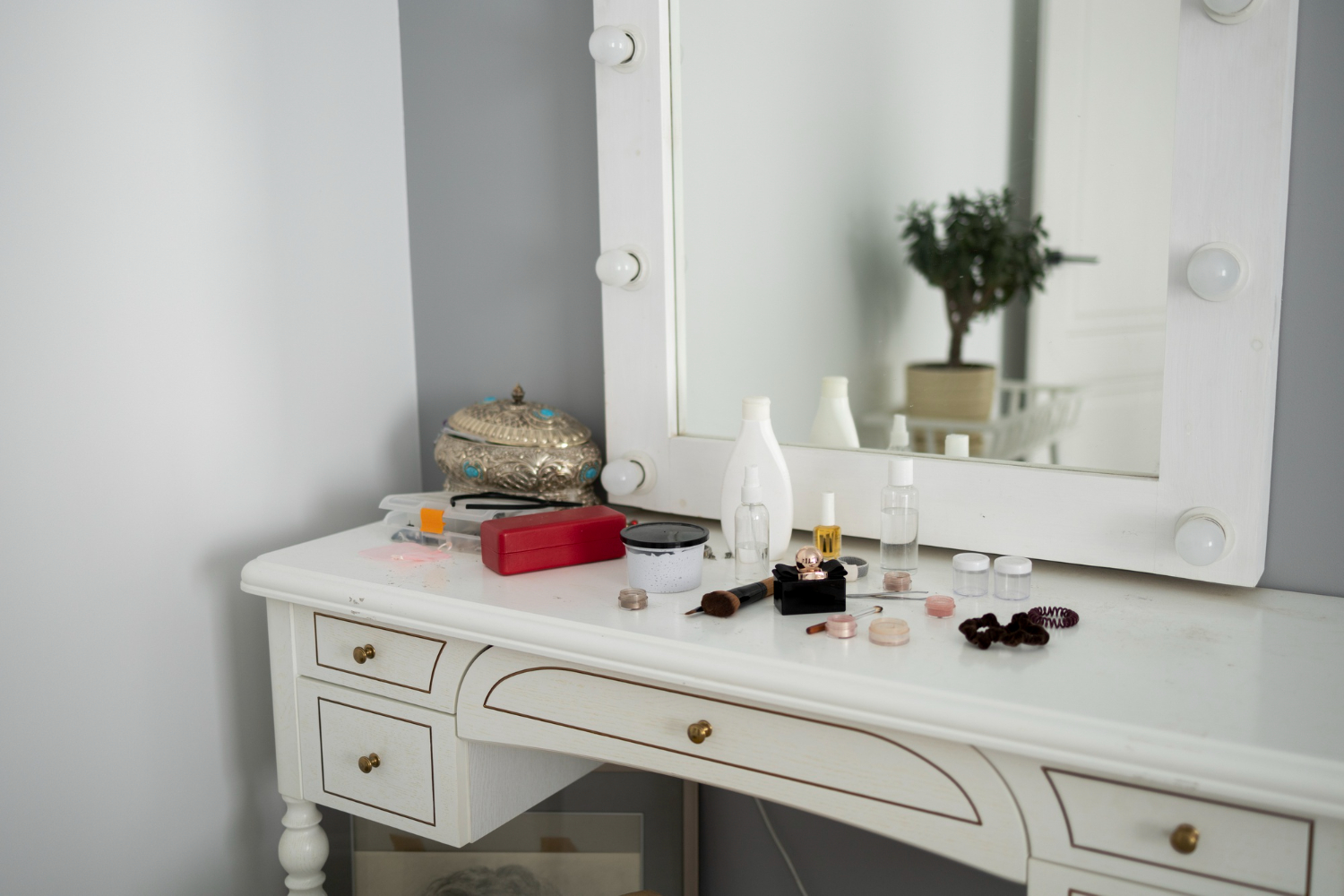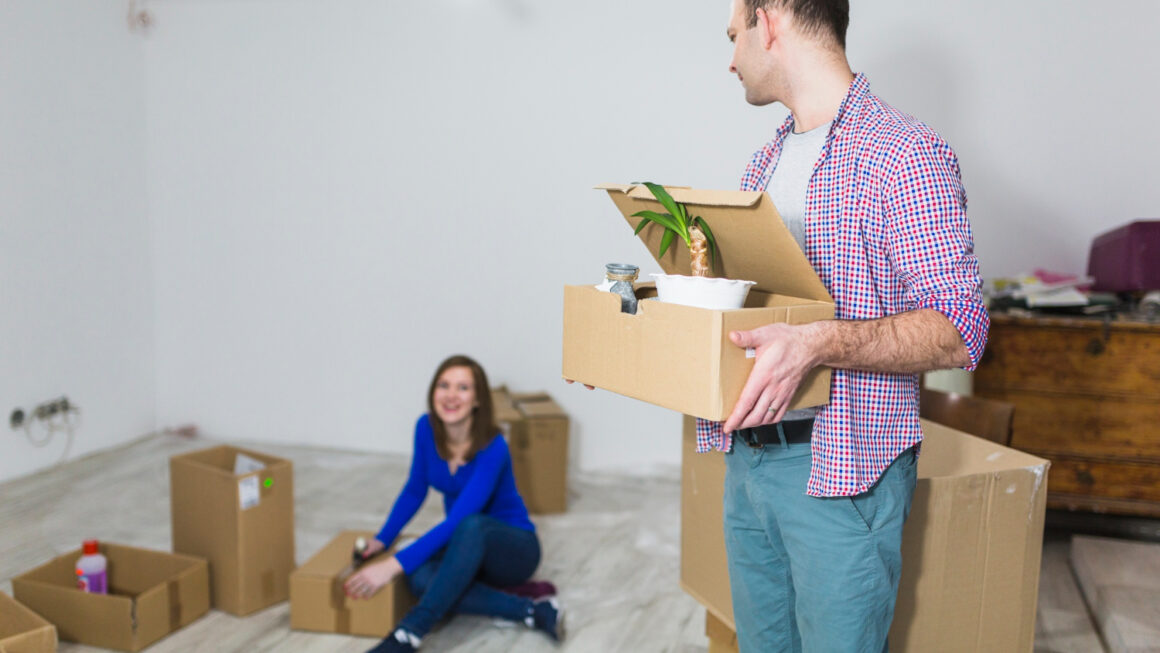Are you tired of your outdated furniture? Looking to add a touch of charm and personality to your home décor?
In this blog post, we’ll delve into everything you need to know about chalk paint – what it is, why it’s so popular among furniture enthusiasts, and how you can use it to transform your beloved pieces. Get ready to unleash your creativity as we explore the benefits and drawbacks of using chalk paint versus latex paint. Plus, we’ll even reveal some top-notch brands that will help make your projects shine.
What is chalk paint or chalk-style paint?
It’s a question that often comes to mind when exploring furniture painting options. Chalk paint, also known as chalk-style paint, is a versatile water-based paint that creates a matte, velvety finish on various surfaces. Unlike traditional paints, it has unique properties that make it stand out in the world of furniture transformations.
One of the defining characteristics of chalk paint is its ability to adhere well to almost any surface without extensive preparation. Whether you want to revamp wooden tables, metal chairs, or even laminate countertops, chalk paint can be your go-to choice for achieving remarkable results. Its thickness covers imperfections and provides excellent coverage with just one or two coats.
Another feature that makes chalk paint special is its forgiving nature. It allows you to embrace imperfections and create distressed effects effortlessly by simply sanding or using wax resist techniques. This characteristic gives your furniture an authentic vintage or shabby chic look – perfect for those who love rustic charm.
Additionally, mixing different shades of chalk paint opens up endless possibilities for customization and personalization. You can create custom color palettes by blending colors together according to your taste and style preferences – the artistic freedom knows no bounds.
Furthermore, working with chalk-style paints offers ease and convenience due to their quick-drying formula. In most cases, there’s no need for priming or sanding before applying the first coat of this magical potion.
Whether you’re a seasoned DIY expert or a novice looking to embark on a creative adventure, using chalk-style paints will surely ignite your inner artist while transforming dull pieces into stunning focal points within your home decor scheme.
Steps and Tips for how to chalk paint furniture:
Step 1: Choose Your Piece
Select the piece of furniture you want to transform with chalk paint. Keep in mind that chalk paint works well on a variety of surfaces, such as wood, metal, and even some plastics. Consider the size and condition of the piece before you begin.
Step 2: Gather Supplies
Collect all the necessary supplies for the project. You will need:
- Chalk paint in your desired color(s)
- Paintbrushes (natural bristle brushes work best)
- Sandpaper or sanding block (for distressing, if desired)
- Clean, lint-free cloths
- Wax or polyurethane (for sealing)
- Painter’s tape (for clean lines if using stencils)
- Transfers, stencils, or graphics (if using)
Step 3: Clean and Prep
Thoroughly clean the furniture piece to remove any dirt, grease, or old finishes. You can use mild soap and water for this. Sand any rough areas or glossy surfaces lightly to create a better surface for the paint to adhere to. Wipe down the piece with a clean cloth to remove any dust from sanding.
Step 4: Start Painting
Dip your paintbrush into the chalk paint and apply the first coat to the furniture. Chalk paint is known for its matte, textured finish, so don’t worry if it looks a bit uneven. Allow the first coat to dry completely before applying a second coat. Depending on the color and coverage, you might need multiple coats for the desired finish. Remember to let each coat dry fully before moving on.
Step 5: Add Transfers, Stencils, or Graphics
If you want to add decorative elements to your furniture piece, now is the time. You can use transfers, stencils, or even freehand painting to create unique designs. Use painter’s tape to hold stencils in place and ensure clean lines. Allow any additional paintwork to dry.
Step 6: Finish Coat – Wax or Poly?
After your paint and any added designs are completely dry, it’s time to seal the piece. You have two main options: wax or polyurethane.
Wax: Chalk paint is often finished with wax for a soft, vintage look. Apply a thin layer of clear furniture wax using a clean cloth or wax brush. Work in small sections and remove any excess wax with another clean cloth. Buff the waxed surface to achieve a subtle sheen. You can also use tinted waxes to add an aged or colored effect.
Polyurethane: If you prefer a more durable and water-resistant finish, polyurethane is a good choice. Choose a water-based polyurethane to avoid yellowing over time. Apply thin coats using a brush, foam brush, or spray, following the manufacturer’s instructions. Allow each coat to dry before applying the next.
Additional Tips:
Work in a well-ventilated area to avoid inhaling fumes.
If you’re new to chalk painting, practice on a small piece before tackling larger furniture.
Chalk paint dries relatively quickly, so work efficiently to avoid brush marks or unevenness.
Experiment with distressing techniques using sandpaper or other tools for a shabby-chic look.
When using stencils, ensure they’re properly secured to prevent bleeding underneath.
Follow the manufacturer’s guidelines for drying times and re-coating intervals of your chosen products.
Remember that waxing creates a softer finish, while polyurethane provides more protection. By following these steps and tips, you’ll be able to chalk paint your furniture and give it a fresh, personalized look.
The Benefits of Chalk Paint vs Latex Paint
- When it comes to painting furniture, there are a variety of options available. Two popular choices are chalk paint and latex paint. While both have their merits, chalk paint offers some unique benefits that set it apart from its latex counterpart.
- One major advantage of using chalk paint is its versatility. Unlike latex paint, which typically requires sanding or priming before application, chalk paint can be used on almost any surface without any prep work. This makes it a convenient option for those who want to quickly transform their furniture.
- Another benefit of using chalk paint is its ability to create a distressed or aged look effortlessly. By simply applying the paint and then lightly sanding certain areas, you can achieve a shabby chic or vintage appearance with ease. This feature allows for creativity and customization in your furniture projects.
- In addition to its aesthetic appeal, another advantage of chalk paint is its matte finish. Unlike latex paint which often has a glossy sheen, the flat finish of chalk paint gives furniture a more rustic and authentic look. It also helps hide imperfections in the wood or surface being painted.
- Furthermore, one key benefit of using chalk paints over latex paints is the minimal odor they emit during the application and drying process due to their low VOC (volatile organic compounds) content. This makes them an excellent choice for indoor use especially if you have sensitivities to strong smells or live in confined spaces where proper ventilation may be limited.
- While both types of paints have their place in furniture refinishing projects, there are distinct advantages to choosing chalk-style paints over traditional latex paints when looking for convenience and versatility along with creating unique finishes on your pieces.
Keep Reading: https://goodbusinesstime.com/home-improvement/how-to-clean-a-commercial-kitchen/
The Drawbacks of Chalk Paint
Chalk paint has gained popularity for its ease of use and vintage appeal, it is important to consider the potential drawbacks before diving into your furniture painting project.
- One drawback of chalk paint is its limited color range. Unlike latex paint which comes in a wide array of colors, chalk paint typically offers a more muted and earthy palette. This may be limiting if you have specific color preferences or are aiming for a bold statement piece.
- Another drawback to keep in mind is that chalk paint requires multiple coats to achieve full coverage. The porous nature of the paint often means that you will need at least two or three coats on each surface. This can add extra time and effort to your painting process compared to using traditional latex paints.
- Additionally, while many people appreciate the matte finish that chalk paint provides it also means that the painted surface can be more prone to showing marks and stains. This may not be ideal if you anticipate heavy use or have young children who could potentially leave fingerprints or spills on your newly painted furniture.
- One common concern with chalk paint is its durability over time. While there are sealants available to help protect the painted surface, some users have reported issues with chipping and wear on heavily used pieces of furniture.
It’s important to weigh these drawbacks against the benefits when deciding whether or not chalk paint is right for your furniture refinishing project.
Some Of The Best Chalk Paint Brands
When it comes to choosing the best chalk paint brand for your furniture projects, you want to make sure you’re getting a high-quality product that will give you the desired results. Here are some of the top brands that consistently deliver excellent performance and beautiful finishes.
Annie Sloan is one of the pioneers in chalk paint, and her brand is highly regarded by DIY enthusiasts and professionals alike. With its velvety matte finish and extensive color range, Annie Sloan Chalk Paint offers versatility and ease of use.
Fusion Mineral Paint is another popular choice among furniture painters. Known for its exceptional coverage and durability, Fusion Mineral Paint requires minimal prep work, making it perfect for both beginners and seasoned crafters.
If you prefer a more budget-friendly option without compromising on quality, consider Rust-Oleum Chalked Ultra Matte Paint. This brand offers a smooth application with excellent adhesion properties and comes in various trendy colors.
General Finishes Milk Paint is another reliable choice when it comes to achieving a distressed or antique finish on your furniture pieces. It provides great coverage with just two coats and has a durable satin sheen once sealed.
Conclusion:
Chalk paint furniture has become a popular choice for DIY enthusiasts and home decorators alike. Its unique matte finish, easy application process, and versatility make it a go-to option for transforming old or worn-out furniture pieces. Whether you’re looking to give new life to an antique dresser or add a pop of color to your dining table, chalk paint is the way to go.
When using chalk paint on furniture, keep in mind the steps and tips outlined earlier in this article. Proper preparation of the surface is essential for achieving optimal results. Take your time with each coat of paint and don’t rush the drying process between coats.
There are many benefits to using chalk paint such as its ease of use and ability to adhere well without priming or sanding, there are also drawbacks worth considering. Chalk paint tends to have limited color options compared to latex paints, so if you’re looking for specific shades or finishes, you might need to mix colors yourself or explore other alternatives.




